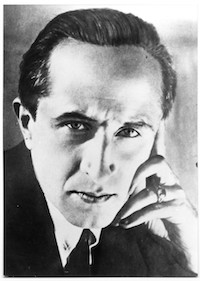Soviet Montage - The Origins of Video Editing
understanding the foundational editing tricks of contemporary cinema
Overview
Concept
Producing interesting and engaging videos requires practice and skill that is perhaps best achieved through immersion into the world of film mixed with intense hands-on production training in both audio and video.
-
Much of contemporary video and film builds upon montage practices established by early Soviet filmmakers.
-
Today, with digital audio and video editing, producing films using montage techniques has become available to anyone with a phone.
The Kuleshov Effect
Concept
In the beginning of the last century, a Soviet filmmaker and educator named Lev Kuleshov showed, in a now-famous experiment, discovered that the juxtaposition of two shots can evoke a meaning in the viewer that is not present within the shots themselves.
- This meaning is created in the mind of the viewer, and is known as The Kuleshov Effect.

Images juxtaposed in time
In the experiement, the same shot of an actor with a neutral face are juxtaposed in time next to a variety of still images:
-
uneaten soup
-
a girl in a coffin
-
a scantily clad woman
Watch Kuleshov’s original experiment for yourself!
Implications
The implication of this experiment, based on viewers’ reactions, was…
-
Viewers bring their own emotional reactions to a sequence of images, projecting their own interpretations onto the sequence.
-
Most prominent filmmakers since then have used this finding to their advantage in arousing viewer engagement and passions.
-
For example, listen to Alfred Hitchcock talk about eliciting feelings of suspense in viewers of his wildly popular films… does it sound familiar?
Montage Theory
Concept
Kuleshov and other Soviet filmmakers of the early 20th century, including most notably Sergei Eisenstein, extended these findings and pioneered the development of a theory of montage, which means “editing”, in French.
-
Eisenstein called montage, ‘the nerve of cinema’.
-
Eisenstein’s film, Battleship Potempkin, is considered by some to be a classic montage masterpiece - watch the famous Odessa steps scene
Types
Film theorists often attribute several types of montage to Eisenstein and his cohort of Soviet filmmakers.
-
Metric montage
-
Rhythmic montage
-
Tonal montage
-
Overtonal / associational montage
-
Intellectual montage
-
Vertical montage
Metric montage
Where a sequence of shots are displayed, with each shot lasting exactly the same amount of time, regardless of the content of the shot.
-
Several sequences with different paces can build up an an emotional effect, such as the building of a feeling of urgency, purpose, or expectation.
-
See an example with a counter clearly showing the meter, or pace, of the shots.
Rhythmic montage
Includes cutting based on continuity, creating visual continuity from edit to edit.
-
Rhythmic montage seeks an editorial and compositional relationship in which movement within the shot dictates the tempo of editing.
-
The action within the shot can either take place in a way similar to how the shot is filmed, or in a movement that is contrary to how the shot is filmed, thereby creating a feeling of tension.
-
A classic example is the shootout scene in The Good, The Bad and the Ugly, Sergio Leone’s 1966 “Spaghetti Western” masterpiece with music by Ennio Morricone.
Tonal montage
Where the focus is on the emotional content of the action within the scene, and cuts according to it, rather than on any given shot’s metric timing or rhythm.
-
For example, the pairing of shots of a mother dying interspersed with shots of her baby sitting calmly in a baby carriage in Battleship Potemkin play with the raw emotions of the audience.
-
Watch a few examples of tonal montage, where each shot is connected by something visual that elicits a consistent emotion.
Overtonal montage
Using combinations of metric, rhythmic, and tonal montage to synthesize an even more abstract and strong overall effect on the audience.
-
This is likened to the effect of overtones in music, which are produced from the merger of multiple tones.
-
View an example from Brian DePalma’s The Untouchables, clearly paying homage to Eisenstein’s Odessa steps scene.
Intellectual montage
A technique where shots from the main narrative are juxtaposed next to shots of unrelated scenes rich in cultural, symbolic, and political history from outside the main narrative in order to show an associative meaning between the two.
-
For example, in the film Apocalypse Now, by Francis Ford Coppolla, the scene where the character named Kurtz is assumed to be executed are mixed with shots of water buffalo being slaughtered, thereby suggesting that the solider is like an animal being driven to its own destruction. You can easily find this clip online.
-
Another example of extreme obviousness is this excerpt of a sexually-suggestive scene from the comedy film, Naked Gun 2 and 1/2.
Vertical montage
Where each shot in a sequence shows the same event or action, often from different perspectives.
-
Vertical montage provides a more detailed view of the subject matter of a scene.
-
For example, a scene of a car driving composed of a shot of a car on a highway followed by a close-up of the car, then a close up on the wheel spinning and then back again to another shot of the full car on the road.
-
Watch a student’s class assignment on vertical montage.
Conclusions
You now have had a quick-and-dirty description of some basic Soviet montage techniques.
- Thank you. Bye.